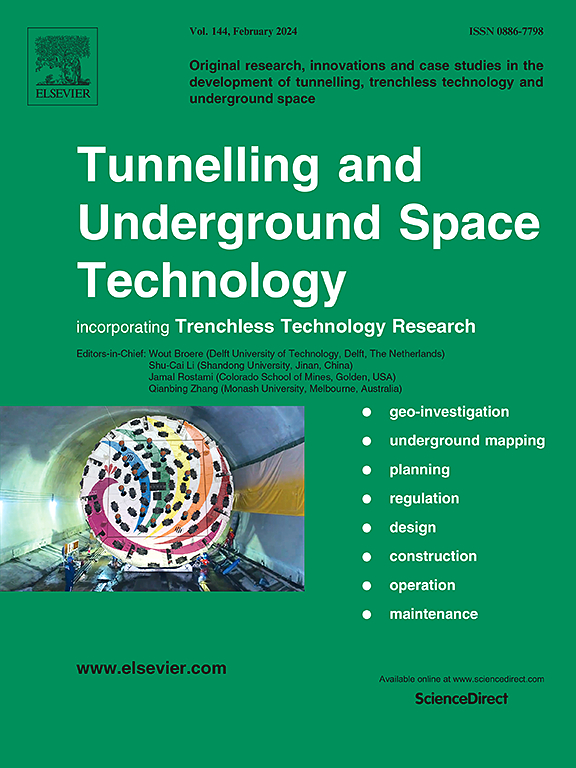城市供水管道泄漏检测的信号处理技术:去噪与特征增强
IF 6.7
1区 工程技术
Q1 CONSTRUCTION & BUILDING TECHNOLOGY
引用次数: 0
摘要
随着城市供水管道的不断扩建,越来越多的管道出现老化、腐蚀等问题,导致管道泄漏频发。由于显著的背景噪声使信号隔离变得复杂,因此准确识别泄漏信号具有挑战性。针对这一问题,本文提出了一种基于时间优化算法、变分模态分解和teager能量算子-符号熵(rime - vmd - teose)的信号去噪和特征增强方法来捕获泄漏信号并放大泄漏特征。首先,利用RIME对VMD进行优化,实现关键参数的自适应选择;通过计算去噪信号的气泡熵来构造故障特征向量,并将其输入到基于rime优化的极限学习机(ELM)中进行泄漏状态识别。其次,利用Teager能量算子对RIME-VMD得到的本征模态函数(IMFs)进行增强,计算增强后信号的符号熵,构造泄漏特征向量,输入到rime优化后的ELM中进行泄漏压力识别;最后,利用管道实验数据对所提出的信号去噪和增强方法进行了验证,对大泄漏、小泄漏、正常和爆震信号的识别准确率为95.71%,对0.4 MPa和0.6 MPa管道泄漏压力的识别准确率为97.69%。这些结果表明,所提出的方法在提高管道泄漏检测和压力识别的准确性和可靠性方面是有效的,有助于更好地监测和维护城市供水系统。本文章由计算机程序翻译,如有差异,请以英文原文为准。

Signal processing techniques for detecting leakage in urban water supply pipelines: Denoising and feature enhancement
As urban water supply pipelines continue to expand, an increasing number of pipelines encounter issues such as aging and corrosion, resulting in frequent leakages. Accurately identifying leakage signals is challenging due to significant background noise complicating signal isolation. To address this issue, this paper proposes a signal denoising and feature enhancement method to capture leakage signals and amplifiy leakage feature based on rime optimization algorithm, variational mode decomposition and teager energy operator-symbolic entropy (RIME-VMD-TEOSE). First, the RIME is employed to optimize VMD, enabling the adaptive selection of key parameters. The bubble entropy of the denoised signal is computed to construct a fault feature vector, which is fed into the RIME-optimized extreme learning machine (ELM) for leakage condition identification. Second, the Teager energy operator is applied to enhance the intrinsic mode functions (IMFs) obtained from the RIME-VMD, and the symbolic entropy of the enhanced signals is calculated to construct a leakage feature vector, which is then input into the RIME-optimized ELM for leakage pressure identification. Finally, the proposed signal denoising and enhancement methods were validated using pipeline experimental data, achieving a recognition accuracy of 95.71 % for distinguishing between large leakage, small leakage, normal, and knock signals, and 97.69 % for identifying pipeline leakage pressures of 0.4 MPa and 0.6 MPa. These results demonstrate the effectiveness of the proposed methods in improving the accuracy and reliability of pipeline leakage detection and pressure identification, contributing to better monitoring and maintenance of urban water supply systems.
求助全文
通过发布文献求助,成功后即可免费获取论文全文。
去求助
来源期刊

Tunnelling and Underground Space Technology
工程技术-工程:土木
CiteScore
11.90
自引率
18.80%
发文量
454
审稿时长
10.8 months
期刊介绍:
Tunnelling and Underground Space Technology is an international journal which publishes authoritative articles encompassing the development of innovative uses of underground space and the results of high quality research into improved, more cost-effective techniques for the planning, geo-investigation, design, construction, operation and maintenance of underground and earth-sheltered structures. The journal provides an effective vehicle for the improved worldwide exchange of information on developments in underground technology - and the experience gained from its use - and is strongly committed to publishing papers on the interdisciplinary aspects of creating, planning, and regulating underground space.
 求助内容:
求助内容: 应助结果提醒方式:
应助结果提醒方式:


